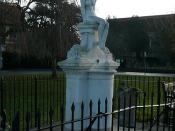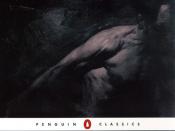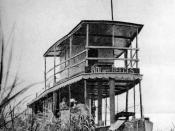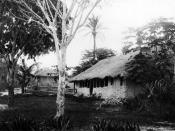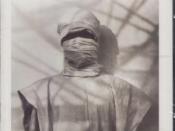Type of Work: Novella
The central story is related by Marlow, a sailor and adventurer who appears in other Conrad works such as Lord Jim. Marlow recalls his experiences as the captain of a steamboat in the Congo, far from the safety of civilization. There, at a station on the edge of the jungle, he hears rumors of a Mr. Kurtz, a remarkable, admired white man who operates a trading post located deep in the wilderness. The more Marlow learns of Kurtz, the more interested he becomes, for Kurtz has cut off contact with the outside world, and there are suggestions that he is seriously ill.
After numerous delays, Marlow steams up the winding, snakelike river toward Kurtz's trading post. Marlow feels that he is heading into a prehistoric time. Along the way, his boat is attacked by savages, and when they finally reach Kurtz's station, Marlow is shocked to see a display of human heads, the spoils of cannibal war.
Kurtz himself is clearly demented and dying, and Marlow slowly realizes that the man is regressing to a primitive state, consumed by his own inner capacity for savageness.
Before Kurtz dies, he recognizes the extent of his change and is appalled. When Marlow returns to England, he lies to protect Kurtz's good name. Like Kurtz, Marlow has seen the heart of darkness within all men.
Conrad first published the story of Kurtz in 1899 as "The Heart of Darkness" for Blackwood's Magazine, but he revised it heavily for inclusion in Youth: A Narrative, And Two Other Stories in 1902. The tale has influenced writers as different as T. S. Eliot and William Faulkner, and it was the major inspiration for Francis Ford Coppola's 1979 Vietnam War film, Apocalypse Now.
